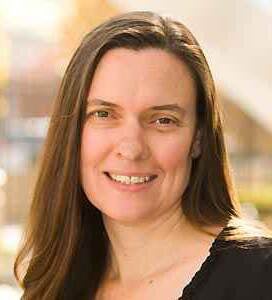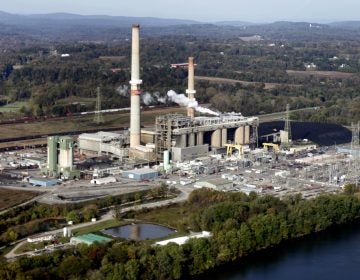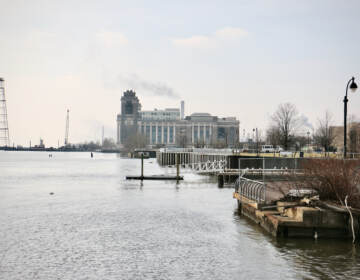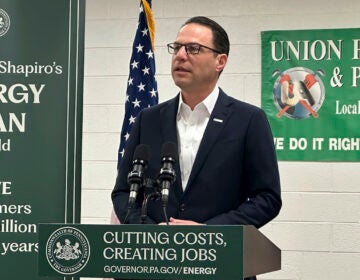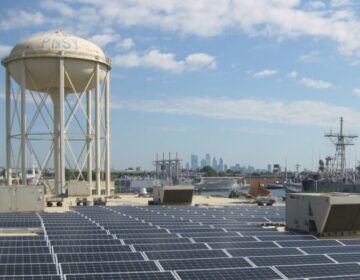What the climate talks in Dubai mean for the Philadelphia region
Here's a look at what these talks have yielded in the past, and what people in the Delaware Valley hope to get out of COP28.
Listen 5:04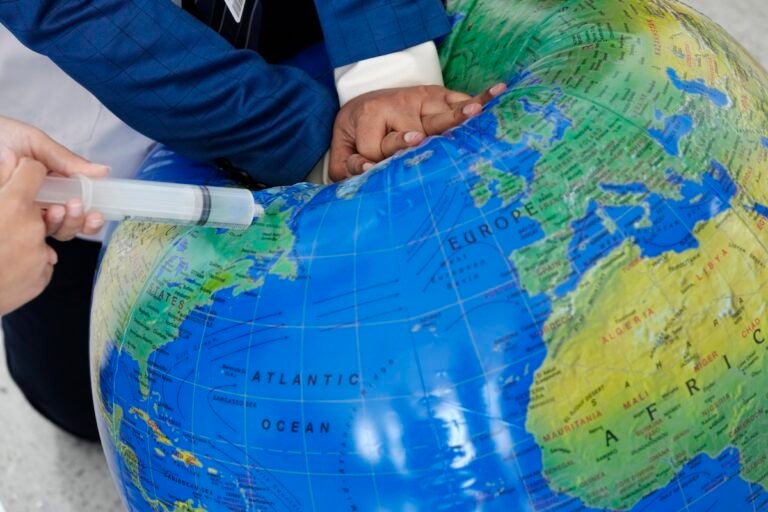
People pretend to resuscitate the Earth during a demonstration at the COP28 U.N. Climate Summit, Sunday, Dec. 3, 2023, in Dubai, United Arab Emirates. (AP Photo/Peter Dejong)
This story is part of the WHYY News Climate Desk, bringing you news and solutions for our changing region.
From the Poconos to the Jersey Shore to the mouth of the Delaware Bay, what do you want to know about climate change? What would you like us to cover? Get in touch.
With deadly floods in Bucks County, dangerous smoke from Canadian wildfires, and a September heatwave that closed the first week of some schools, climate change hit the Philadelphia region hard in 2023.
For the next two weeks, more than 70,000 people, including negotiators from nearly 200 countries, will be in Dubai to negotiate a treaty to tackle global warming. The annual U.N. sponsored event, known as the Conference of the Parties, or COP28, will be the 28th such gathering of nations to curb emissions caused by the burning of fossil fuels, and mitigate destruction that populations across the world are experiencing, including increasing floods, droughts, heat waves, wildfires and storms.
Who from the Philadelphia area attends the conference?
The city of Philadelphia is not sending anyone to the COP, but it is a member of several organizations that do attend and advocate for the needs of cities including Bloomberg’s C40 group. As a member, Philadelphia has committed to using 100% renewable energy by 2030 and net zero carbon emissions by 2050.
Members of non-governmental organizations and academic researchers often attend the COP to advocate for cutting carbon emissions, sharing their research on solutions, and learning what others are doing. For example, The University of Pennsylvania and Drexel University typically send delegations to the COP.
What have these talks yielded in the past?
Some COPs have been more successful than others in moving the needle toward global cooperation in cutting greenhouse gas emissions. The Paris Accords, forged at the COP in 2015, is considered landmark since that is where the parties agreed to cut emissions enough to prevent average global temperatures to 2 degrees Celsius, or 3.6 degrees Fahrenheit, above pre-industrial levels. That goal is now 1.5 degrees Celsius, or 2.7 degrees Fahrenheit given consensus that 2 degrees Celsius would be catastrophic.
A recent report from the U.N. Intergovernmental Panel on Climate Change (IPCC) says carbon emissions need to be cut by 8% each year up until 2034 to have even a 50% chance of staying below 1.5 degrees Celsius temperature rise. The pledges made at the 2015 COP would not meet that requirement.
The U.N. also reports that 2023 will be the warmest on record so far, with average temperatures at the end of October having risen 1.4 degrees Celsius since pre-industrial levels.
This year is called the “global stocktake”, which focuses on measuring and evaluating the adequacy of the goals of the Paris Accords, and how countries are meeting them. It will also build off the agreement made last year in Egypt regarding climate finance, often referred to as “loss and damage,” where poorer nations that have not contributed nearly as much to increased emissions, deserve payment from the richer countries that have.
So far, there is no commitment to ban, or even phase out the use of fossil fuels.
Do cities or local governments play a role?
For the first time, the climate talks include a focus on cities and the importance of local governments in reducing emissions and helping residents handle the impacts of climate change. The Local Action Climate Summit is co-sponsored by Bloomberg Philanthropies. On December 6, there will also be an Urban Ministerial Committee meeting.
How is climate change already impacting our region?
Climate scientists have been warning for decades that our region will become hotter and wetter. Those predictions have already begun to play out in more destructive rain events, flooding, and heatwaves.
How is what happens in Dubai relevant to our region?
Global climate commitments mean that nation-states have to set targets and initiate policies to reach those goals back home. This trickles down to the states, but more importantly, cities and towns are where these policies have to get implemented.
The largest piece of funding and policy-making on tackling climate change and reaching targets are the Bipartisan Infrastructure Law and the Inflation Reduction Act initiated by the Biden administration. While neither have the word climate in their title, they provide billions of funds for infrastructure improvements, flooding and warming mitigation, electrification, incentives for more efficient consumer-level products like heat pumps, and electric vehicles.
A recent example for Philadelphia is the $12 million for new trees to cool inner city neighborhoods.
What do locals want to come out of the COP?
City officials say they want better messaging to emerge from the event, and more funding to address global climate justice, as well as local energy poverty, a particular issue in Philadelphia where people struggle to pay their electricity and heating bills. Energy burden, means the percentage of household income spent on utility bills like, gas and electricity. In Philadelphia, the Office of Sustainability says almost half of residents experience a “high to severe” energy burden, with average percentages in some neighborhoods as high as 12 percent, while other more affluent areas spend an average of 1.3% of their income on heating, cooling and electricity. And while some cities in the global South suffer more from a lack of resources, extreme poverty, and vulnerable coastlines, climate change in Philadelphia will impact its poorer residents most.
“I think it would be very helpful for us [to hear] more innovative talking points about it, but more specifically to Philadelphia, climate justice, energy affordability, the equitable distribution of environmental risks and burdens, because right now it’s not equitable,” said Liz Lankenau, the city’s interim director of the Office of Sustainability.
“Are they going to keep cities involved in the conversations at this international level? What support through the policies and planning initiatives that come out of these international conferences. How does that translate into effective city government?” asks Lankenau.
Drexel University’s director of the Environmental Collaboratory Mathy Stanislaus will be heading to the COP this week. He says while the high-level talks “shine a bright light” on the issue, the real work happens after everyone returns home to their local communities.
“I think this is the moment of implementation,” said Stanislaus. “And I strongly believe that climate implementation begins on the ground and begins with identifying the most vulnerable communities who are at risk right now from flooding, from extreme heat. How do we protect them from these most extreme risks? How do you prepare hospitals? And bringing not just all of government, but all of society together to prepare for and prevent the worst harm to the most vulnerable citizens of this city, this state, in this country.
WHYY is your source for fact-based, in-depth journalism and information. As a nonprofit organization, we rely on financial support from readers like you. Please give today.


